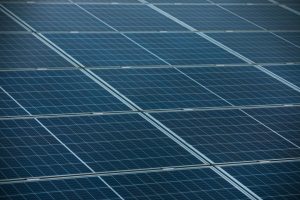The Best Solaris: Harnessing the Power of the Sun
Solar power, also known as solar energy, is the conversion of sunlight into electricity using photovoltaic (PV) cells. These cells are made of semiconductor materials, such as silicon, which absorb photons from the sun and generate an electric current. When sunlight hits the PV cells, the photons knock electrons loose from their atoms, allowing them to flow through the material to produce electricity. This process is known as the photovoltaic effect.
Solar power systems can be installed on rooftops or in open areas where they can capture the maximum amount of sunlight. The electricity generated by these systems can be used to power homes, businesses, and even entire communities. In addition to PV cells, solar power can also be harnessed through solar thermal systems, which use mirrors or lenses to concentrate sunlight and convert it into heat to produce steam, which then drives a turbine to generate electricity.
Solar power is a renewable and sustainable energy source that produces no greenhouse gas emissions, making it an environmentally friendly alternative to traditional fossil fuels. As technology continues to advance, the cost of solar power has decreased significantly, making it more accessible to homeowners and businesses. With the potential to reduce reliance on non-renewable energy sources and combat climate change, solar power is becoming an increasingly popular choice for those looking to make a positive impact on the environment.
Key Takeaways
- Solar power is generated by converting sunlight into electricity using photovoltaic cells, also known as solar panels.
- Harnessing solar power can save you money on electricity bills and reduce your carbon footprint, making it an environmentally friendly energy solution.
- When choosing a solar power system, consider factors such as your energy needs, available space for installation, and budget.
- Proper installation and maintenance of your solar power system are essential for maximizing its efficiency and longevity.
- To maximize the efficiency of your solar power system, consider using energy storage solutions, optimizing panel placement, and monitoring energy usage.
The Benefits of Solaris: How Harnessing the Power of the Sun Can Save You Money and Help the Environment
Harnessing the power of the sun through solar power systems offers a wide range of benefits for both individuals and the environment. One of the most significant advantages of solar power is its potential to save homeowners and businesses money on their energy bills. By generating electricity from sunlight, solar power systems can significantly reduce or even eliminate the need to purchase electricity from the grid. This can lead to substantial long-term savings on energy costs, especially as the price of traditional electricity continues to rise.
In addition to saving money, solar power also offers environmental benefits by reducing reliance on fossil fuels and decreasing greenhouse gas emissions. By generating clean, renewable energy from sunlight, solar power systems help to mitigate climate change and reduce air pollution. This can have a positive impact on public health and the environment, making solar power an attractive option for those looking to reduce their carbon footprint and contribute to a more sustainable future.
Furthermore, installing a solar power system can increase the value of a property and provide a reliable source of electricity, even during power outages. With the potential for long-term cost savings, environmental benefits, and increased property value, harnessing the power of the sun through solar power systems offers a compelling case for individuals and businesses looking to make a positive impact on both their finances and the planet.
Choosing the Right Solaris System: Factors to Consider When Selecting the Best Solar Power Solution for Your Home or Business
When considering a solar power system for your home or business, there are several important factors to take into account to ensure you select the best solution for your needs. One of the first considerations is the size of the system, which will depend on your energy consumption and available space for installation. A professional assessment of your energy usage and site conditions can help determine the optimal size and type of solar power system for your specific requirements.
Another important factor to consider is the type of solar power system, whether it be grid-tied, off-grid, or hybrid. Grid-tied systems are connected to the local utility grid and can feed excess electricity back into the grid, while off-grid systems operate independently and require battery storage for electricity when sunlight is not available. Hybrid systems combine elements of both grid-tied and off-grid systems, offering flexibility and reliability in varying conditions.
Additionally, the quality and efficiency of the solar panels and other system components should be carefully evaluated. High-quality panels with a good efficiency rating can maximize energy production and ensure long-term reliability. It’s also important to consider the warranty and maintenance requirements of the system to ensure it will continue to perform optimally over its lifespan.
Finally, financial considerations such as upfront costs, available incentives, and financing options should be taken into account when selecting a solar power system. By carefully evaluating these factors and working with a reputable solar installer, you can choose the right solar power solution that meets your energy needs, budget, and environmental goals.
Installation and Maintenance: Tips for Properly Installing and Caring for Your Solaris System
| Topic | Details |
|---|---|
| Location | Choose a location with maximum sunlight exposure |
| Installation | Follow manufacturer’s guidelines for proper installation |
| Maintenance | Regularly clean solar panels and check for any damage |
| Monitoring | Use monitoring systems to track the performance of your solar system |
| Professional Help | Seek professional help for any repairs or maintenance issues |
Proper installation and maintenance are crucial for ensuring the optimal performance and longevity of your solar power system. When it comes to installation, it’s important to work with a qualified and experienced solar installer who can assess your site conditions, design an efficient system, and ensure proper installation according to local building codes and regulations. A professional installer will also handle any necessary permits and inspections to ensure compliance with all requirements.
Once your solar power system is installed, regular maintenance is essential for keeping it operating at peak efficiency. This includes cleaning the solar panels regularly to remove dirt, dust, and debris that can reduce their effectiveness. In addition, checking for any shading from nearby trees or structures and trimming vegetation as needed can help maximize sunlight exposure and energy production.
Monitoring system performance through a monitoring platform or app can also help identify any issues or inefficiencies early on so they can be addressed promptly. This may include checking for any potential damage or malfunctions in the system components, such as inverters or wiring, and scheduling regular inspections by a qualified technician to ensure everything is functioning properly.
By following these installation and maintenance tips, you can ensure that your solar power system continues to generate clean, renewable energy efficiently for many years to come.
Maximizing Solaris Efficiency: Strategies for Getting the Most Out of Your Solar Power System
To maximize the efficiency of your solar power system, there are several strategies you can implement to optimize energy production and usage. One effective approach is to minimize energy consumption through energy-efficient appliances, lighting, and insulation in your home or business. By reducing your overall energy usage, you can make the most of the electricity generated by your solar power system and further decrease your reliance on traditional grid electricity.
Another strategy for maximizing solar power efficiency is to consider energy storage options such as batteries. By storing excess electricity generated during sunny periods, you can use it during times when sunlight is not available, such as at night or during cloudy weather. This can help increase self-consumption of solar energy and provide backup power in case of grid outages.
In addition, optimizing the orientation and tilt angle of your solar panels can help maximize sunlight exposure and energy production. By ensuring that panels are facing the optimal direction and angle for your location’s latitude, you can capture as much sunlight as possible throughout the day.
Finally, integrating smart energy management systems or home automation technologies can help you monitor and control your energy usage more effectively. This may include programmable thermostats, smart lighting controls, or energy monitoring devices that provide real-time data on your energy consumption and production.
By implementing these strategies for maximizing solar power efficiency, you can make the most of your investment in clean, renewable energy while reducing your environmental impact.
Solaris Incentives and Rebates: How Government Programs and Tax Credits Can Help Offset the Cost of Going Solar

Government programs and tax credits can provide valuable incentives and rebates to help offset the upfront costs of installing a solar power system. These incentives are designed to encourage individuals and businesses to invest in renewable energy and reduce their reliance on traditional fossil fuels.
One common incentive is the federal Investment Tax Credit (ITC), which allows homeowners and businesses to deduct a percentage of their solar power system costs from their federal taxes. The ITC has been instrumental in making solar power more affordable for many individuals and has helped drive significant growth in the solar industry.
In addition to federal incentives, many states offer their own rebates, tax credits, or performance-based incentives for installing solar power systems. These incentives can vary widely by state but may include cash rebates, property tax exemptions, sales tax exemptions, or performance-based incentives based on energy production.
Furthermore, some utility companies offer net metering programs that allow customers with solar power systems to receive credit for excess electricity they generate and feed back into the grid. This credit can offset future electricity bills or be paid out at a predetermined rate by the utility company.
By taking advantage of these incentives and rebates, you can significantly reduce the cost of going solar and accelerate the return on your investment in clean, renewable energy.
The Future of Solaris: Innovations and Advancements in Solar Power Technology
As technology continues to advance, there are numerous innovations and advancements in solar power technology that are shaping the future of solaris. One area of innovation is in solar panel efficiency, with ongoing research focused on developing new materials and designs that can capture more sunlight and convert it into electricity more effectively. This includes advancements in thin-film solar cells, multi-junction cells, and perovskite solar cells that have shown promising potential for increasing efficiency.
Another area of advancement is in energy storage solutions such as batteries, which are becoming increasingly important for maximizing self-consumption of solar energy and providing backup power during grid outages. Research into new battery chemistries, improved performance, and reduced costs is driving significant progress in this area.
Furthermore, advancements in smart grid technologies are enabling more efficient integration of solar power into existing electrical grids. This includes improved grid management systems, demand response technologies, and advanced metering infrastructure that can help balance supply and demand more effectively while integrating higher levels of renewable energy.
In addition to technological advancements, there is growing interest in community solar projects that allow multiple individuals or businesses to invest in a shared solar power system located off-site from their property. This model provides an opportunity for those who may not have suitable rooftops or land for solar installation to still benefit from clean energy generation.
Overall, these innovations and advancements in solar power technology are driving continued growth in the industry while making clean, renewable energy more accessible and affordable for individuals and businesses alike. As research and development continue to progress, we can expect even more exciting developments in the future of solaris.
If you’re interested in solar energy, you might also want to check out this article on how to choose the best solar panels for your home. It provides valuable information on selecting the right solar panels for your specific needs and budget.
FAQs
What is solar energy?
Solar energy is energy from the sun that is converted into thermal or electrical energy. It is a renewable and sustainable source of energy that can be harnessed using various technologies such as solar panels and solar thermal systems.
What are the benefits of solar energy?
Some of the benefits of solar energy include reducing electricity bills, decreasing reliance on fossil fuels, reducing carbon emissions, and contributing to a cleaner environment. Solar energy also provides energy independence and can increase property value.
How does solar energy work?
Solar energy is captured using solar panels, which contain photovoltaic cells that convert sunlight into electricity. When sunlight hits the solar panels, the photovoltaic cells generate direct current (DC) electricity, which is then converted into alternating current (AC) electricity for use in homes and businesses.
What are the different types of solar panels?
The two main types of solar panels are monocrystalline and polycrystalline. Monocrystalline panels are made from single-crystal silicon and are more efficient but also more expensive. Polycrystalline panels are made from multiple silicon crystals and are less efficient but more affordable.
What factors should be considered when choosing the best solar panels?
When choosing the best solar panels, factors to consider include efficiency, durability, warranty, cost, and the specific energy needs of the property. It is also important to consider the reputation of the manufacturer and the installation company.














Post Comment
You must be logged in to post a comment.